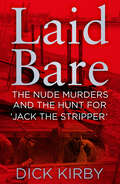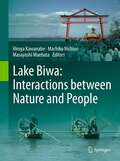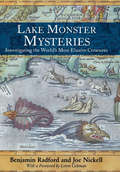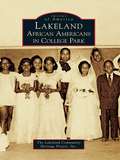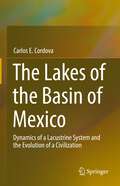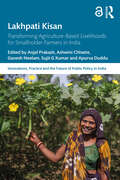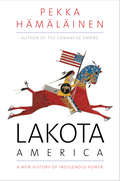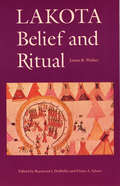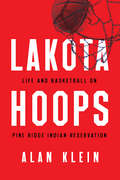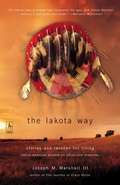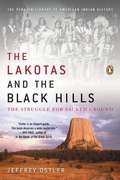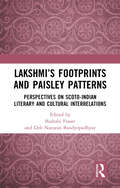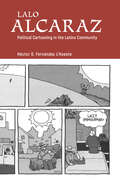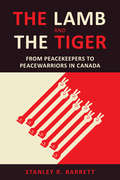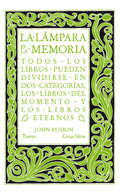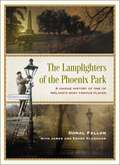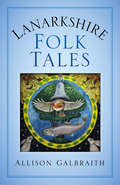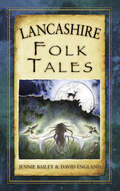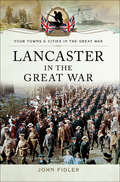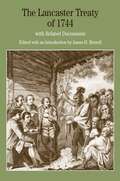- Table View
- List View
Laid Bare: The Nude Murders and the Hunt for 'Jack the Stripper'
by Dick KirbyBetween 1959 and 1965, eight murders were carried out in and around west London. The victims, all of whom were prostitutes, were asphyxiated. The murders were linked: the last six were all carried out in the space of twelve months. The press dubbed the murderer 'Jack the Stripper' on account of the fact that the victims were all stripped naked. The legendary Scotland Yard investigator Detective Chief Superintendent John Du Rose was brought in to orchestrate the inquiry. Du Rose flooded the night-time capital with police officers in plain clothes, and women police officers dressed as prostitutes to carry out dangerous decoy patrols. Of the 1,7000 potential suspects interviewed, the number was whittled down to twenty-six, and eventually to one. But before Du Rose could interview him, the mean committed suicide and the case was closed down. Was this man 'Jack the Stripper'? Dick Kirby, a former Flying Squad detective, has used his vast experience and contacts at Scotland Yard to re-examine the case, more commonly known as 'The Nude Murders', fifty years on.
Lake Biwa: Interactions between Nature and People
by Hiroya Kawanabe Machiko Nishino Masayoshi MaehataThis book focuses on the long-term interactions between people and nature in and around Lake Biwa, one of the oldest lakes in the world. Accordingly, it not only covers the characteristics of the biota of this ancient lake, but also approaches it as a 'cultural ancient lake.' Furthermore, various problems affecting the lake, especially recent environmental changes that occurred before and after Japan's rapid economic growth of the 1950s and 60s, are reviewed, including water pollution, lakeshore development and the reclamation of attached lakes, alien and invasive species, and problems related to the recent warming of the climate. Lastly, by analyzing data on these problems collected by the local government and residents of the lake basin, the book provides a comprehensive outlook on the future of Lake Biwa and people's lifestyles. As such, it provides indispensable information for all people engaged in improving and conserving water regimes around the world, as well as people interested in the culture and history of Japan.
Lake Monster Mysteries: Investigating the World's Most Elusive Creatures
by Benjamin Radford Joe NickellFun facts, folklore, and scientific studies about what really lurks in the cold, murky depths: &“A most enjoyable read.&” —John Kirk, author of In the Domain of the Lake Monsters For centuries, eyewitnesses around the world—from America to Africa, Argentina to Scotland—have reported sightings of dark, mysterious creatures that surface briefly from local lakes, only to quickly disappear. While the most famous lake monsters, those living in Loch Ness and Lake Champlain, have gained international notoriety, hundreds of lakes around the world are said to shelter these shadowy creatures. Lake Monster Mysteries is the first book to collectively approach these widespread mysteries from a scientific perspective. By using exhaustive research and results from firsthand investigations to help separate truth from myth, the authors foster our understanding of what really lurks in the cold, murky depths. Benjamin Radford and Joe Nickell, among the top lake monster authorities in the world, now share unique insights into many of the world&’s best-known lake monsters. They interview dozens of people and discuss the different types of sightings, delve into possible explanations, and examine hoaxes, evidence claims, and legends surrounding the monsters. The authors have conducted groundbreaking fieldwork and experiments at lakes, examined photographic evidence, and analyzed the most current sonar readings. Incorporating newly revealed information and up-to-date developments, the cases in Lake Monster Mysteries are in-depth, firsthand investigations that will inform and entertain both avid lake monster researchers and lovers of unexplained mysteries. Includes photos and illustrations
Lakeland: African Americans in College Park (Images of America)
by The Lakeland Community Heritage Project, Inc.Lakeland, the historical African American community of College Park, was formed around 1890 on the doorstep of the Maryland Agricultural College, now the University of Maryland, in northern Prince George's County. Located less than 10 miles from Washington, D.C., the community began when the area was largely rural and overwhelmingly populated by European Americans. Lakeland is one of several small, African American communities along the U.S. Route 1 corridor between Washington, D.C., and Laurel, Maryland. With Lakeland's central geographic location and easy access to train and trolley transportation, it became a natural gathering place for African American social and recreational activities, and it thrived until its self-contained uniqueness was undermined by the federal government's urban renewal program and by societal change. The story of Lakeland is the tale of a community that was established and flourished in a segregated society and developed its own institutions and traditions, including the area's only high school for African Americans, built in 1928.
The Lakes of the Basin of Mexico: Dynamics of a Lacustrine System and the Evolution of a Civilization
by Carlos E. CordovaThis book is a review of research on the prehistoric and historic evolution of the Basin of Mexico’s lacustrine systems. Based on this review, the book presents a model of long and short-term natural lacustrine dynamics as the basis for understanding the processes of human adaptation and transformation of the aquatic ecosystems of the Basin of Mexico. Although only remains of the former lakes exist, the book stresses the importance of the knowledge of the former natural and cultural history of the lakes. In this sense, the book addresses the misconceptions and misinterpretations of the lakes that still exist in the literature and the media and that do not reflect the real nature of the lakes in the past. Therefore, the book attempts to not only feed into the local knowledge of the lakes, but also contribute to the worldwide knowledge of lacustrine dynamics and human populations that lived in and around them. The book should be of interest to geographers, geologists, archaeologists, natural historians and environmental scientists, civil engineers, city planners and those involved in the management of natural resources.
Lakhpati Kisan: Transforming Agriculture-Based Livelihoods for Smallholder Farmers in India (Public Policy in India)
by Anjal Prakash, Ashwini Chhatre, Ganesh Neelam, Sujit G Kumar and Apurva DudduAgriculture plays an essential role in the growth of developing economies, as agricultural production is key to food security and is closely intertwined with the livelihoods of many. This book explores the lives of smallholder agricultural farmers in India and the dire challenges that agricultural households face.Focussing on the Lakhpati Farmers initiative, the book examines interventions made by the programme to economically empower farmers and accelerate income growth in the agriculture sector. The programme, initiated by the Collectives for Integrated Livelihood Initiatives (CInI) in the tribal belts of central Indian states, helped farmers earn over INR 100,000 (or one lakh – hence Lakhpati) per annum. The programme engaged with households in 12 districts across 4 states – Jharkhand, Odisha, Maharashtra, and Gujarat – to bring about change through economic empowerment and improve the quality of life of tribal communities. This book documents these initiatives and strategies to meet the aspirations of small and marginal farmers by understanding the ingredients, processes, and challenges involved. The book analyses the programme, examines case studies, and offers ways forward.Part of the Innovations, Practice and the Future of Public Policy in India series, this volume will interest students and researchers of agriculture and rural development, business management, governance, public policy, development studies, and sociology.This book is freely available as a downloadable Open Access PDF at http://www.taylorfrancis.com under a Creative Commons (CC-BY-NC-ND) 4.0 license.
Lakota America: A New History of Indigenous Power (The Lamar Series in Western History)
by Pekka HamalainenThe first comprehensive history of the Lakota Indians and their profound role in shaping America’s history This first complete account of the Lakota Indians traces their rich and often surprising history from the early sixteenth to the early twenty‑first century. Pekka Hämäläinen explores the Lakotas’ roots as marginal hunter‑gatherers and reveals how they reinvented themselves twice: first as a river people who dominated the Missouri Valley, America’s great commercial artery, and then—in what was America’s first sweeping westward expansion—as a horse people who ruled supreme on the vast high plains. The Lakotas are imprinted in American historical memory. Red Cloud, Crazy Horse, and Sitting Bull are iconic figures in the American imagination, but in this groundbreaking book they emerge as something different: the architects of Lakota America, an expansive and enduring Indigenous regime that commanded human fates in the North American interior for generations. Hämäläinen’s deeply researched and engagingly written history places the Lakotas at the center of American history, and the results are revelatory.
Lakota Belief and Ritual
by James R. Walker Elaine A. Jahner Raymond J. DeMallie"The real value of Lakota Belief and Ritual is that it provides raw narratives without any pretension of synthesis or analysis, as well as insightful biographical information on the man who contributed more than any other individual to our understanding of early Oglala ritual and belief."—Plains Anthropologist
Lakota Hoops: Life and Basketball on Pine Ridge Indian Reservation (Critical Issues in Sport and Society)
by Alan KleinFor over 150 years the Lakota have tenaciously defended their culture and land against white miners, settlers, missionaries, and the U.S. Army, and paid the price. Their economy is in shambles and they face serious social issues, but their culture and outlook remain vibrant. Basketball has a role to play in the way that people on Pine Ridge Indian Reservation configure their hopes for a better future, and for pride in their community. In Lakota Hoops, anthropologist Alan Klein trains his experienced eye on the ways that Lakota traditions find a seamless expression in the sport. In a variety of way such as weaving time-honored religious practices into the game or extending the warrior spirit of Crazy Horse to the players on the court, basketball has become a preferred way of finding continuity with the past. But the game is also well suited to the present and has become the largest regular gathering for all Lakota, promoting national pride as well as a venue for the community to creatively and aggressively confront white bigotry when needed. Richly researched and filled with interviews with Pine Ridge residents, including both male and female players, Lakota Hoops offers a compelling look at the highs and lows of a community that has made basketball its own.
The Lakota Way: Stories and Lessons for Living
by Joseph M. MarshallJoseph M. Marshall’s thoughtful, illuminating account of how the spiritual beliefs of the Lakota people can help us all lead more meaningful, ethical lives.Rich with storytelling, history, and folklore, The Lakota Way expresses the heart of Native American philosophy and reveals the path to a fulfilling and meaningful life. Joseph Marshall is a member of the Sicunga Lakota Sioux and has dedicated his entire life to the wisdom he learned from his elders. Here he focuses on the twelve core qualities that are crucial to the Lakota way of life--bravery, fortitude, generosity, wisdom, respect, honor, perseverance, love, humility, sacrifice, truth, and compassion. Whether teaching a lesson on respect imparted by the mythical Deer Woman or the humility embodied by the legendary Lakota leader Crazy Horse, The Lakota Way offers a fresh outlook on spirituality and ethical living.
The Lakota Way: Stories and Lessons for Living
by Joseph M. MarshallJoseph M. Marshall's thoughtful, illuminating account of how the spiritual beliefs of the Lakota people can help us all lead more meaningful, ethical lives. Rich with storytelling, history, and folklore, The Lakota Way expresses the heart of Native American philosophy and reveals the path to a fulfilling and meaningful life. Joseph Marshall is a member of the Sicunga Lakota Sioux and has dedicated his entire life to the wisdom he learned from his elders. Here he focuses on the twelve core qualities that are crucial to the Lakota way of life--bravery, fortitude, generosity, wisdom, respect, honor, perseverance, love, humility, sacrifice, truth, and compassion. Whether teaching a lesson on respect imparted by the mythical Deer Woman or the humility embodied by the legendary Lakota leader Crazy Horse, The Lakota Way offers a fresh outlook on spirituality and ethical living.
Lakota Woman
by Richard Erdoes Mary Crow DogIn her personal account Mary Crow describes the troubles that the Native Americans in South Dakota underwent under the US government during the American Indian Movement in 1970's.
The Lakotas and the Black Hills: The Struggle For Sacred Ground
by Jeffrey OstlerA concise and engrossing account of the Lakota and the battle to regain their homeland. The Lakota Indians made their home in the majestic Black Hills mountain range during the last millennium, drawing on the hills' endless bounty for physical and spiritual sustenance. Yet the arrival of white settlers brought the Lakotas into inexorable conflict with the changing world, at a time when their tribe would produce some of the most famous Native Americans in history, including Red Cloud, Sitting Bull, and Crazy Horse. Jeffrey Ostler's powerful history of the Lakotas' struggle captures the heart of a people whose deep relationship with their homeland would compel them to fight for it against overwhelming odds, on battlefields as varied as the Little Bighorn and the chambers of U. S. Supreme Court.
Lakshmi’s Footprints and Paisley Patterns: Perspectives on Scoto-Indian Literary and Cultural Interrelations
by Bashabi Fraser Deb Narayan BandyopadhyayLakshmi’s Footprints and Paisley Patterns: Perspectives on Scoto-Indian Literary and Cultural Interrelationships is a unique collection of essays that comprehensively discusses the nature of interrelationship of India and Scotland spread over the last two centuries. It covers areas such as nature writing with an emphasis on Alexander Hamilton and Patrick Geddes, role of the formative history of Scottish Churches College, Disruption Movement in Scotland and Calcutta, rise of surveillance literature, dichotomy of Homeland and Hostland, Vidyasagar and Scottish transactions, Scottish missionary movement in Kalimpong, Scottish war literature, and interface of Scottish and Indian legal systems. Print edition not for sale in South Asia (India, Sri Lanka, Nepal, Bangladesh, Pakistan or Bhutan)
Lalo Alcaraz: Political Cartooning in the Latino Community (Tom Inge Series on Comics Artists)
by Héctor D. Fernández L’HoesteAmid the controversy surrounding immigration and border control, the work of California cartoonist Lalo Alcaraz (b. 1964) has delivered a resolute Latino viewpoint. Of Mexican descent, Alcaraz fights for Latino rights through his creativity, drawing political commentary as well as underlining how Latinos confront discrimination on a daily basis. Through an analysis of Alcaraz's early editorial cartooning and his strips for La Cucaracha, the first nationally syndicated, political Latino daily comic strip, author Héctor D. Fernández L'Hoeste shows the many ways Alcaraz's art attests to the community's struggles. Alcaraz has proven controversial with his satirical, sharp commentary on immigration and other Latino issues. What makes Alcaraz's work so potent? Fernández L'Hoeste marks the artist's insistence on never letting go of what he views as injustice against Latinos, the fastest growing ethnic group in the United States. Indeed, his comics predict a key moment in the future of the United States--that time when a racial plurality will steer the country, rather than a white majority and its monocultural norms. Fernández L'Hoeste's study provides an accessible, comprehensive view into the work of a cartoonist who deserves greater recognition, not just because Alcaraz represents the injustice and inequity prevalent in our society, but because as both a US citizen and a member of the Latino community, his ability to stand in, between, and outside two cultures affords him the clarity and experience necessary to be a powerful voice.
The Lamb and the Tiger: From Peacekeepers to Peacewarriors in Canada (UTP Insights)
by Stanley BarrettThis book focuses on the broad implications of the transformation of Canada from a peacekeeping to a war-making nation during the Conservative Party’s recent decade in power. Funds were poured into the Canadian Forces, and a newly militarized nation found itself entrenched in conflicts around the globe. For decades, Canada had played a leading role in UN peacekeeping, and when the Cold War ended, the prospect of international harmony was infectious. Yet in short order hostilities erupted in the failed states of Rwanda, Somalia, and the Balkans; terrorism – including 9/11 – raised its head; and Iraq and Afghanistan became war zones. In the face of these immense challenges, the UN was dismissed by its opponents as irrelevant. Structured around an anti-war perspective, The Lamb and the Tiger critically examines the ageless genetic and more recent cultural (civilizational) explanations of war, concluding with a close look at the impact of war and right-wing politics on women and Indigenous peoples. The Lamb and the Tiger encourages Canadians to think about what kind of military and what kind of country they really want.
Lame Deer, Seeker Of Visions (Enriched Classics Ser.)
by Richard ErdoesLame Deer--Storyteller, rebel, medicine man. Lame Deer was born almost a century ago on the Rosebud Reservation in South Dakota. A full-blooded Sioux, he was many things in the white man's world -- rodeo clown, painter, prisoner. But, above all, he was a holy man of the Lakota tribe. The story he tells is one of harsh youth and reckless manhood, shotgun marriage and divorce, history and folklore as rich today as ever -- and of his fierce struggle to keep pride alive, though living as a stranger in his own ancestral land.
The Lamentations: A Requiem for Queer Suicide
by Patrick AndersonFINALIST, ASSOCIATION FOR THEATRE IN HIGHER EDUCATION (ATHE) OUTSTANDING BOOK AWARDA moving journey through the shadows of queer suicide and a tribute to lives marked by struggle and beautyThe Lamentations explores the struggles and resilience within the queer community, offering a unique blend of historical analysis and emotional tribute to those affected. Author Patrick Anderson examines the phenomenon of queer suicide across various art forms such as film, theatre, and literature, tracing its evolution from the twentieth century to today.Anderson brings to light the personal stories of individuals in the queer community who have ended their lives, compiling narratives from sources like newspaper articles, obituaries, and case studies. The book confronts the harsh realities of loneliness, shame, and oppression faced by many LGBTQ+ individuals, providing a poignant reflection on the societal challenges they face.The Lamentations is more than a meditation on death; it’s a narrative of survival, mourning, and healing. Sharing personal accounts, including the losses of loved ones and friends, Anderson highlights the importance of memory and storytelling in celebrating the vibrancy of queer life amidst the sorrow of loss. Accessible to a broad readership, the book transcends academic boundaries to address themes of love, loss, and the human spirit. It’s a compelling read for anyone interested in queer studies or anyone seeking to understand human experience through the lens of loss and legacy.
La lámpara de la memoria (Serie Great Ideas #Volumen 33)
by John RuskinIdeas que han cambiado el mundo A lo largo de la historia, algunos libros han cambiado el mundo. <P><P>Han transformado la manera en que nos vemos a nosotros mismos y a los demás. Han inspirado el debate, la discordia, la guerra y la revolución. Han iluminado, indignado, provocado y consolado. Han enriquecido vidas, y también las han destruido. Taurus publica las obras de los grandes pensadores, pioneros, radicales y visionarios cuyas ideas sacudieron la civilización y nos impulsaron a ser quienes somos. <P><P>John Ruskin echó abajo las ideas sobre arte y arquitectura dominantes en la sociedad victoriana. Para él, en las obras arquitectónicas, lejos del ánimo de lucro, debe primar el afán por comunicar verdades humanas eternas y transmitir la historia viva de la sociedad que las produjo.
The Lamplighters of the Phoenix Park: A unique history of one of Ireland’s most famous places
by James Flanagan Frank Flanagan Donal FallonThe Phoenix Park in Dublin holds a special place in the collective memory of Irish people. From the assassinations of 1882 and the destruction of several imperial monuments, to the arrival of Douglas Hyde as Ireland's first president and Pope John Paul's 1979 visit, it has been at the centre of Irish society for centuries.But the park is also part and parcel of daily life for many Dubliners - none more so than the Flanagan family, who have been lighting the gas lamps within its walls since 1890.Here, historian Donal Fallon speaks to brothers Frank and James Flanagan, lamplighters of the park, to give us a snapshot of a fading tradition, and a unique history of one of Ireland's most beloved places.With stunning photographs, historical events and personal stories, The Lamplighters of the Phoenix Park shines a light on the park at the centre of our national identity, through the prism of this singular family, whose histories have been intertwined for more than 150 years.
The Lamplighters of the Phoenix Park: A unique history of one of Ireland’s most famous places
by James Flanagan Frank Flanagan Donal FallonThe Phoenix Park in Dublin holds a special place in the collective memory of Irish people. From the assassinations of 1882 and the destruction of several imperial monuments, to the arrival of Douglas Hyde as Ireland's first president and Pope John Paul's 1979 visit, it has been at the centre of Irish society for centuries.But the park is also part and parcel of daily life for many Dubliners - none more so than the Flanagan family, who have been lighting the gas lamps within its walls since 1890.Here, historian Donal Fallon speaks to brothers Frank and James Flanagan, lamplighters of the park, to give us a snapshot of a fading tradition, and a unique history of one of Ireland's most beloved places.With stunning photographs, historical events and personal stories, The Lamplighters of the Phoenix Park shines a light on the park at the centre of our national identity, through the prism of this singular family, whose histories have been intertwined for more than 150 years.
Lanarkshire Folk Tales
by Allison GalbraithFrom a cantankerous brownie in Dolphinton to the vampire with iron teeth who terrorised Glasgow, this collection of tales spans fourteen centuries of Lanarkshire's history and happenings. Here you will find the legends of William Wallace's love and loss in Lanark and Saint Mungo's bitter feud with the Pagan hierarchy and Druids, alongside totemic animals, unique Scottish flora and fauna, warlocks, herb-wives and elfin trickery.Allison Galbraith combines storytelling expertise with two decades of folklore research to present this beguiling collection of Lanarkshire stories, suitable for adults and older children.
Lancashire Folk Tales (Folk Tales: United Kingdom)
by Jennie Bailey David EnglandThese lively and entertaining folk tales from one of Britain’s most diverse counties are vividly retold by writer, storyteller and poe t Jennie Bailey and storyteller, writer,psychotherapist and shamanic guide David England. Take a fantasy journey around Lancashire, the Phantom Voice at Southport, the Leprechauns of Liverpool and the famous hanging of Pendle Witches at Lancaster,to the infamous Miss Whiplash at Clitheroe. Enjoy a rich feast of local tales, a vibrant and unique mythology,where pesky boggarts, devouring dragons, villainous knights,venomous beasts and even the Devil himself stalk the land. Beautifully illustrated by local artists Jo Lowes and Adelina Pintea, these tales bring to life the landscape of the county’s narrow valleys, medieval forests and treacherous sands.
Lancaster in the Great War
by John FidlerAlthough Lancaster was the ancient County town, it had a population of only 40,000 in 1914. Of these, it is thought that some 5,000 men saw war service between 1914-18, and over 1,000 did not return. In consequence, the recruiting drives, the tribunals to consider exemption from 1916, and the ever-growing casualty lists provide the main theme for this book.Some 3,000 men had volunteered by December 1914, to join those already serving. While the depot of the Kings Own Royal Lancaster Regiment was in the town, about eighty regiments had Lancaster men in their ranks, and both the casualty lists and the awards for gallantry reflect this.The town was out of range for shelling from the sea, or aerial bombardment, but did experience an explosion at its munitions factory in 1917. Apart from this, the mayor and council endeavoured to continue with their primary duties as far as possible in running the town.
The Lancaster Treaty of 1744: With Related Documents
by James H. MerrellThe Lancaster Treaty of 1744 offers students a close look at colonial-Indian relations in North America. The treaty minutes offer some of the best historical evidence of Iroquois perspectives on colonial power and diplomacy. James Merrell uses the treaty minutes, published by Benjamin Franklin shortly after the end of the negotiations, to illuminate critical issues in the mid-eighteenth-century struggles between and among Indians and colonial empires. These issues, including competing colonial claims, land use and tenure, diplomacy, and cultural exchange, bring complex colonial worlds to life for students. Accompanying the treaty minutes are four documents by European and colonial observers who visited the Iroquois before, during, or after the treaty negotiations, shedding further light ― and some ambiguity ― on Indian-white relations in this period. A list of major figures, a chronology of events, questions for consideration, a selected bibliography, and an index further enable students’ exploration of this event.
